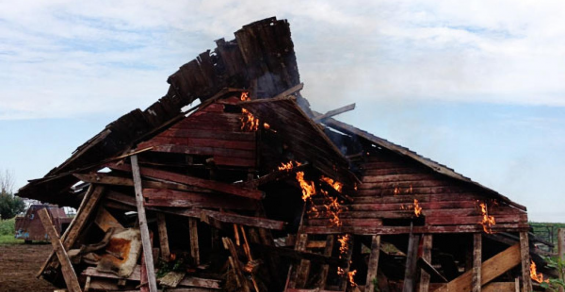Four generations of my family have lived on the ranch where we run cattle and raise hay and crops. Before my grandfather purchased the land and building site, the farm was home to a dairy and hog operation.
With each transition of ownership, the location has changed to meet the needs of the current operator. Currently, my husband Tyler and I now reside on a ranch located a mile from the original homestead, and fortunately for us, most of our buildings are in great shape with little to no improvements needed.
READ: 4 reasons why the barn is the heart of a good ranch
However, we still run cattle and operate at my parents’ place where I grew up, and in the last eight years that I’ve been home since graduating from college, we’ve had to make tough decisions about some of the original buildings as we work to improve, expand and increase the efficiencies of our operation.
For starters, the main barn is a beautiful and traditional building that still stands tall after all this time. Over the years, we’ve painted, replaced windows and tinned the roof. However, when the sad day comes that the walls start caving in and the building starts sagging to the middle, I doubt it will be worth the investment to keep putting money into the old barn.
We’ve also torn down several buildings, including a small hog barn that was no longer viable. After using it as a windbreak for a few decades, we finally set a match to it in 2013 and have since replaced the building with a more appropriate steel windbreak.
View the gallery: 13 images from a barn burning
The next project we’ve set our sights on is removing old fences and replacing them with new. This requires much time, labor and expense, but having to constantly run and maintain electric fences is just a short-term solution for a long-term problem.
As we consider improvements on the place, there are several considerations to keep in mind. In a recent webinar, Kevin Janni, University of Minnesota professor and Extension engineer, listed eight hard questions we must consider before fixing and remodeling an old barn or starting over with a new build.
“The purpose of a livestock building is to facilitate the management plan,” Janni said. “You have to ask yourself, is it worth the time, money and effort to remodel? If the remodeled space won’t perform as well as a new space, then building new may be a better option.”
First, he says, we must define the purpose for the animal housing.
In summarizing Janni’s presentation, Heidi Carroll, South Dakota State University Extension livestock stewardship associate, writes, “Determine the specie type, number and ages of animals that will be housed in the facility. Determine the feedstuffs, feed delivery, bedding materials and manure management plan. The ultimate goal is to provide a clean, dry environment with plenty of fresh air and easy access to clean, fresh feed and water for the animals. Don’t overlook lighting to complete observation and animal care tasks.”
Second, consider the improved labor efficiency and safety ramifications of a remodel or a rebuild.
“Consider the number of people to complete the necessary animal care tasks,” Carroll says. “If the goal is to have one person be able to do everything, does the pen and alley layout allow for this or should more gates be considered? Strive to make the animal care tasks easy to do with proper equipment because we all know that people choose the easy way of doing things. Be critical of the layout and work tasks to create a safe working environment. Are ceilings too low? Is footing appropriate for people and animals? Are there new tools or equipment to purchase to complete tasks if the barn is remodeled?”
READ: Musings while tinning the barn roof
Third, identify all animal care tasks.
“Ask yourself, can I do these things and can I do them easily in this current space?” asks Carroll. “The basic tasks to consider include: preparing and providing feed, providing clean water, fresh air in all weather conditions, animal observation, add bedding, remove bedding and manure, treating ill animals, breeding or birthing, and other desired tasks.”
Additional questions include: What is the structural integrity and soundness of the current facility? How tall do I need the ceiling to be to store equipment, haul manure, unload bedding or do other tasks? What is the accessibility of utilities like water and electricity? What is the best location for the new building? Is it in the existing spot or would somewhere else be more conducive to additional improvements such as the next barn, feed bunker or manure pit? How about the costs? What about building permits?
Read more about these tough questions that must be asked before and answered by clicking here.
Also, keep in mind with inputs increasing, it never hurts to be conservative. If the remodel or new build will add efficiencies, improve safety and increase profitability without breaking the bank, then it sounds like a no-brainer. However, if the rebuild is more for vanity and cosmetic purposes, or if it could be put off a few more years while other payments are made, perhaps a few small repairs to get by would be a better option.
For additional profitability tips, check out: 8 drivers of profitability and how to manage them to make more money
The opinions of Amanda Radke are not necessarily those of beefmagazine.com or Farm Progress.




Leave A Comment